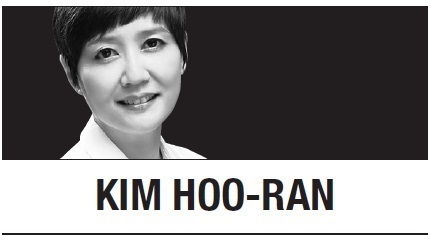
In the early days of the COVID-19 pandemic, which has raged on for more than seven months now, it was said that there would be a plethora of books about the time of the novel coronavirus in the years to come. Judging by recent press releases, artists appear to be already at work trying to make sense of these confusing times.
But how many artists will make it through these rough times when the cultural scene remains crippled following the monthslong virtual shutdown? Even in better days, “struggling artist” was an expression used without much thought, the expression reinforcing the romantic notion of the artist as someone engaged in the solemn work of asking mankind’s existential questions with little or no material compensation for his efforts. But there is only so much “struggling” that can be borne even by young artists just starting out, full of ambition and optimism.
Responding to the crisis in the arts sector brought on by the COVID-19 pandemic, the Culture Ministry earlier this month announced a supplementary budget of 156.9 billion won ($131 million) to be spent on normalizing the arts sector in the second half of the year.
Of the total budget, 23.2 billion won has been earmarked for the direct support of 7,725 artists, providing them with a one-time payment of 3 million won each. The program attracted some 14,000 applicants when it was implemented in the first half of the year, with only 7,535 of them receiving a total of 22.6 billion won. The number of applications is telling of the dire conditions of the artists, given the fact that many artists who work as freelancers could not even apply for the funding because they lacked the paperwork required to prove that they are working artists.
The National Museum of Modern and Contemporary Art, Korea reopened last week with an exhibition titled “Unflattening.” Among the works exploring the devastation of wars are drawing and sketches by the Korean War artist corps such as abstract artist Kim Whan-ki whose paintings of refugee camps in vivid colors evoke a strange sensation of despair.
Kim Song-hwan’s series of drawings of mass exodus of people from Seoul, US bombing of Kaesong and people grieving the deaths of loved ones, each work duly dated and often with the location identified, have an immediacy and an emotional pull that set them apart from photographs and video footage of war.
Chinese dissident artist’s wallpaper work “Refugees and new Odyssey,” which juxtaposes ancient frieze and the plight of modern day refugees, is an eloquent reminder that history repeats itself.
How will the generations to come view the COVID-19 era, the time when the “great disruptor” laid bare societies’ deep divisions, festering wounds and inequalities that had been a long time simmering? How do we pass on what we are learning about ourselves in the face of this calamity?
One way is to enlist artists in recording these times. Through art, music, dance, drama, literature, films, let artists do their part, not only recording the reality but also in shaping it.
One of the achievements of the Great Depression era in the US is the stupendous body of art produced as part of President Roosevelt’s New Deal. In fact, many Americans experienced art firsthand for the first time through the Works Progress Administration’s concerts and public art that provided work for artists by hiring them as wage laborers. Many of those artists went on to become accomplished artists and some of the artworks, including murals, created at the time still stand today.
A crisis often creates new opportunities because of their disruptive power. If the current crisis leads to thinking about a sustainable future for the arts and culture, one long-term impact of the COVID-19 may be a flourishing of the arts.
By Kim Hoo-ran (
khooran@heraldcorp.com)
Kim Hoo-ran is the culture desk editor at The Korea Herald. –Ed.








![[Today’s K-pop] Blackpink’s Jennie, Lisa invited to Coachella as solo acts](http://res.heraldm.com/phpwas/restmb_idxmake.php?idx=644&simg=/content/image/2024/11/21/20241121050099_0.jpg)